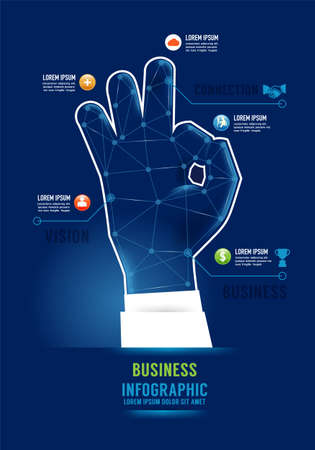Understanding Work Visas in the U.S.
If youre a business owner or HR manager in the United States looking to bring in international talent, navigating the immigration system can feel overwhelming. The good news is, there are several types of work visas designed to help companies hire foreign professionals. Let’s break down the most common visa options, their eligibility requirements, and what you need to know about the application process.
Overview of Common U.S. Work Visa Types
| Visa Type | Who It’s For | Key Requirements | Typical Duration |
|---|---|---|---|
| H-1B | Specialty Occupations (e.g., engineers, IT, finance) | Bachelor’s degree or higher in a specialty field; job offer from a U.S. employer | Up to 3 years, extendable to 6 years |
| L-1 | Intracompany Transfers (multinational execs, managers, or specialists) | Employed at least 1 year abroad with the company; transferring to U.S. office | 1-3 years initially; up to 7 years for managers/executives |
| O-1 | Individuals with Extraordinary Ability (arts, sciences, athletics, business) | Demonstrated national/international acclaim; job offer from a U.S. employer or agent | Up to 3 years, can be extended in 1-year increments |
The Application Process for Businesses
The process for bringing foreign talent on board varies based on the visa type, but typically follows these steps:
- Job Offer: The U.S. employer must extend a formal job offer to the foreign candidate.
- Papers & Petitions: The employer files a petition (such as Form I-129) with U.S. Citizenship and Immigration Services (USCIS). Each visa category has its own paperwork and supporting documents.
- LCA/Certification (for H-1B): For H-1B visas, employers must also file a Labor Condition Application (LCA) with the Department of Labor to ensure fair wages and working conditions.
- Approval & Next Steps: Once approved by USCIS, the candidate applies for a visa at their local U.S. embassy or consulate if outside the country, or adjusts their status if already in the U.S.
- Start Working: After receiving the visa or approval notice, the employee can start working in the U.S. as outlined in their petition.
A Few Important Tips for Employers
- Timing matters: Some visas like H-1B have annual quotas and strict deadlines. Plan ahead!
- Sponsorship responsibilities: As an employer sponsor, you’ll have legal obligations such as wage guarantees and recordkeeping.
- Legal help is wise: Immigration law changes often. Consulting with an experienced attorney can help avoid delays or mistakes.
2. Pathways to Permanent Residency: The Green Card Process
Understanding Green Card Categories for Employees
For many foreign professionals working in the U.S., getting a green card (permanent residency) is a major goal. There are several ways to achieve this, depending on your background, job skills, and employer support. Here’s a breakdown of the main employment-based green card categories:
| Category | Description | Typical Candidates |
|---|---|---|
| EB-1 | Priority Workers: Persons with extraordinary abilities, outstanding professors/researchers, or multinational executives/managers | Top scientists, business leaders, professors, high-level managers at international companies |
| EB-2 | Advanced Degree Professionals or persons with exceptional ability; may include National Interest Waiver (NIW) | Engineers, doctors, researchers with masters degrees or higher, professionals whose work benefits the U.S. |
| EB-3 | Skilled workers, professionals (with bachelor’s degree), and other workers (unskilled labor) | Nurses, teachers, IT specialists, skilled tradespeople, restaurant managers |
| EB-4 | Special Immigrants: Religious workers, certain long-term employees of the U.S. government abroad, etc. | Religious leaders, translators for U.S. military, broadcasters |
| EB-5 | Immigrant Investors: People who invest $800K+ and create jobs in the U.S. | Entrepreneurs and investors seeking permanent residency through investment and job creation |
The Role of Employer Sponsorship in the Green Card Process
Most employment-based green cards require employer sponsorship. This means your employer must be willing to sponsor you by filing a petition with USCIS and sometimes completing a process called PERM Labor Certification to show there are no qualified U.S. workers for your position. Some categories like EB-1A (Extraordinary Ability) or EB-2 NIW allow individuals to self-petition without employer sponsorship.
Green Card Application Steps & Timelines
The process can vary based on your category and country of birth but typically involves three main steps:
- PERM Labor Certification: Employer proves no qualified U.S. worker is available for your job (not required for all categories).
- I-140 Petition: Employer files an immigrant petition on your behalf (or you self-petition where allowed).
- I-485 Adjustment of Status or Consular Processing: You apply to become a permanent resident when your priority date is current.
| Step | Description | Estimated Timeframe* |
|---|---|---|
| PERM Labor Certification | Employer recruitment & DOL approval (if required) | 6–12 months+ |
| I-140 Petition Filing & Approval | Sponsorship by employer or self-petitioning (where eligible) | 6–12 months+ |
| I-485/Consular Processing | Apply for permanent residency when visa number is available | 8–18 months+ |
*Timelines can vary significantly based on USCIS workload and applicants country of birth due to per-country visa caps.
Navigating Common Challenges: Practical Tips for Employers & Employees
- Start early: The process can take years—begin as soon as possible!
- Track priority dates: These determine when you can file your final application. Use the Visa Bulletin for updates.
- Work with immigration counsel: Rules change often—an experienced attorney helps avoid costly mistakes.
- Create a clear paper trail: Keep copies of every document submitted and communication received.
- If stuck in backlogs: Explore temporary visa extensions (like H-1B extensions beyond 6 years if I-140 approved) while waiting for a green card slot.
Your Next Steps in Hiring or Applying for a Green Card
The green card process can seem overwhelming, but breaking it down into steps makes it more manageable. Whether you’re an employer hoping to keep talented team members long-term or an employee aiming for permanent residency, understanding these pathways is key to success in the American workforce.

3. Best Practices for Recruiting and Onboarding Foreign Employees
Strategies for Finding International Candidates
Recruiting foreign talent can open up new perspectives and skill sets for your business. Here are some proven strategies to help you find the right international candidates:
| Strategy | Description |
|---|---|
| Partner with Global Job Boards | Use platforms like Indeed Worldwide, Glassdoor, or LinkedIn to post job openings that reach a global audience. |
| Work with Specialized Recruitment Agencies | Collaborate with agencies experienced in international hiring and immigration requirements. |
| Attend International Job Fairs & Virtual Events | Participate in global job fairs or online events to connect with potential candidates from different countries. |
| Utilize Employee Referral Programs | Encourage your current employees to refer friends or former colleagues abroad who may be a good fit. |
| Connect with University Career Centers | Reach out to universities with strong international student programs for recent graduates seeking employment in the U.S. |
Considerations During the Recruitment Process
Navigating the recruitment process for foreign employees involves extra steps compared to hiring locally. Keep these key considerations in mind:
- Immigration Status: Verify the types of work visas available (such as H-1B, L-1, or OPT) and ensure candidates qualify for sponsorship if needed.
- Cultural Fit: Assess how well candidates might adapt to your workplace culture, including communication styles and teamwork preferences.
- Remote Interviews: Use video calls to accommodate time zone differences and make the process accessible for overseas applicants.
- Clear Communication: Be upfront about sponsorship processes, timelines, and any support your company provides during relocation and visa processing.
- Diversity & Inclusion: Highlight your company’s commitment to diversity, which can attract top international talent looking for welcoming workplaces.
Steps to Integrate New Hires into Your Company Culture
A smooth onboarding process helps foreign employees feel welcome and ready to contribute. Here’s a step-by-step approach:
| Step | Description |
|---|---|
| Create an Onboarding Plan | Design a structured onboarding program that includes orientation, training sessions, and introductions to team members. |
| Assign a Mentor or Buddy | Pair new hires with a colleague who can guide them through their first months and answer questions about workplace norms. |
| Cultural Training Workshops | Offer workshops on American workplace culture, communication styles, and social customs to ease cultural transitions. |
| Provide Immigration Support | Assist with paperwork, legal compliance, and relocation logistics to reduce stress and help employees settle in smoothly. |
| Foster Open Communication | Create channels where new hires can ask questions and share feedback as they adjust to their new environment. |
| Celebrate Diversity | Acknowledge holidays from different cultures and encourage team members to share their backgrounds and traditions. |
Tips for Building an Inclusive Workplace Environment
- Create employee resource groups for international staff to foster community and support.
- Offer language assistance programs or English classes if needed.
- Regularly check in with new hires during their first year to ensure they feel included and valued.
- Praise achievements publicly—recognition goes a long way in building morale!
Your Next Steps in Building a Global Team
The process of recruiting and onboarding foreign employees might seem complex at first, but by following these best practices, you’ll not only stay compliant with immigration laws but also create a workplace where international talent thrives.
4. Compliance and Legal Pitfalls to Avoid
Understanding Compliance in U.S. Immigration
Navigating immigration laws is more than just securing the right visas or green cards—compliance is key to avoiding hefty fines, audits, or even criminal penalties. As an employer hiring foreign talent, it’s essential to understand your responsibilities and maintain accurate records.
Common Compliance Issues
- Improper I-9 Documentation: Every employee, regardless of citizenship, must fill out Form I-9 to verify identity and work authorization. Missing deadlines or incorrect forms can result in penalties.
- Lack of E-Verify Usage: Some states require employers to use the E-Verify system. Not following state-specific rules can put you at risk.
- Expired Work Authorization: Failing to track and update work permits for foreign workers is a common mistake.
- Discrimination: Over-asking for documents or treating foreign-born employees differently can lead to discrimination claims under federal law.
Required Documentation Checklist
| Document | Pertains To | Purpose | Retention Period |
|---|---|---|---|
| Form I-9 | All Employees | Verify work eligibility | 3 years after hire or 1 year after termination (whichever is later) |
| E-Verify Confirmation | If applicable by state/company size | Confirm employment eligibility online | No federal retention period, but best practice is to keep with I-9s |
| Sponsorship Records (e.g., PERM, H-1B petitions) | Sponsored Foreign Workers | Demonstrate compliance with Department of Labor and USCIS requirements | At least 5 years from date of filing or as instructed by law |
| Public Access Files (for H-1B workers) | H-1B Employers | Show wage and working conditions compliance | 1 year beyond last employment date or 1 year from filing (whichever is longer) |
| LCA (Labor Condition Application) | H-1B, E-3, H-1B1 Visa Holders | Ensure fair wages and working conditions for visa holders | No less than 1 year after end of employment period covered by LCA |
Avoiding Penalties: Best Practices for Employers
- Create a Clear Process: Have a step-by-step onboarding checklist that includes timely completion of I-9s and relevant visa paperwork.
- Train Your HR Team: Make sure your HR staff understands current immigration laws and anti-discrimination practices.
- Audit Regularly: Schedule periodic internal reviews of your documentation to catch errors before they become legal problems.
- Stay Updated: Immigration regulations change often. Subscribe to updates from USCIS and Department of Labor to keep your policies current.
- Cultural Sensitivity Training: Managing a multicultural workforce means being aware of cultural differences while ensuring equal treatment under the law.
If You Face an Audit or Investigation…
If ICE or another agency notifies you about an audit, respond promptly and consult with an experienced immigration attorney. Having organized records will make this process smoother and help demonstrate your good-faith compliance efforts.
5. Leveraging Immigration to Drive Innovation and Growth
How Hiring Foreign Talent Gives You a Competitive Edge
In today’s fast-paced U.S. business landscape, having the right talent can make all the difference. By hiring foreign professionals through work visas and green cards, your company can unlock new opportunities for innovation and success. Here’s how bringing in global talent helps your business:
Diversity Fuels Creative Solutions
Teams made up of people from different backgrounds bring fresh ideas and perspectives. This diversity leads to creative problem-solving, which is essential for staying ahead in competitive industries like tech, healthcare, and finance.
Expanding Your Global Reach
Foreign hires often have unique knowledge about international markets, languages, and cultures. This expertise allows your company to connect with customers worldwide and explore new business opportunities more effectively.
Filling Critical Skill Gaps
The U.S. faces shortages in specialized roles like engineering, data science, and IT. By hiring skilled foreign workers, you can fill these gaps quickly and keep your projects moving forward without delays.
Benefits of Hiring Foreign Talent at a Glance
| Benefit | Description | Impact on Business |
|---|---|---|
| Diverse Perspectives | Employees from different cultures bring new ways of thinking | More innovative products & solutions |
| Global Market Access | Understanding of international customers and trends | Easier expansion into global markets |
| Skill Shortage Solutions | Access to talent in hard-to-fill roles | Faster growth & project completion |
Cultural Benefits in the Workplace
Hiring from abroad also helps create an inclusive environment where everyone feels valued. Employees learn from each other’s experiences, leading to better teamwork and job satisfaction.
Navigating the Process Effectively
The U.S. immigration system offers several pathways for businesses to hire foreign talent—such as H-1B visas for specialty occupations or employment-based green cards. Working closely with immigration attorneys ensures that you follow all regulations and make the most of these programs.


